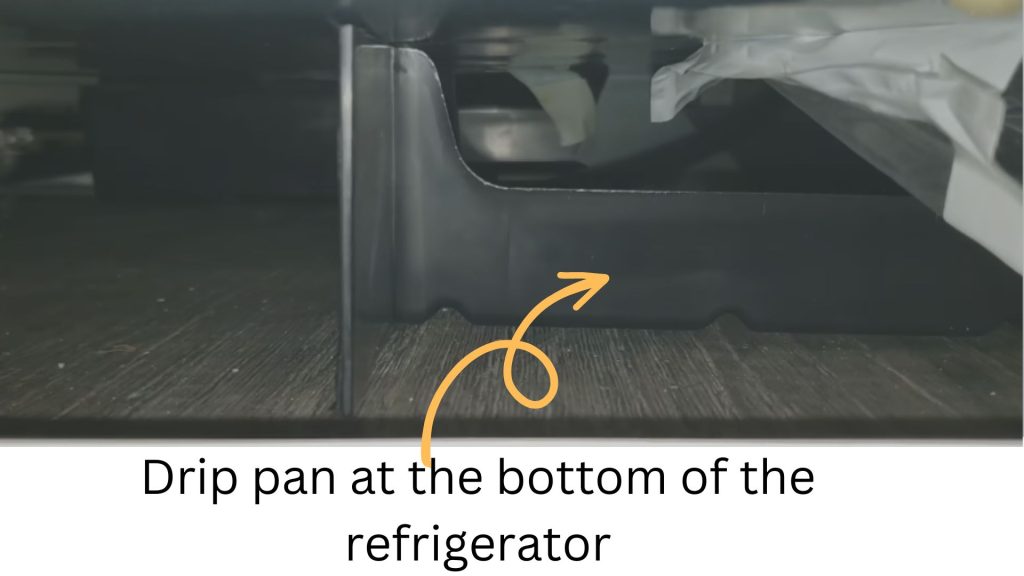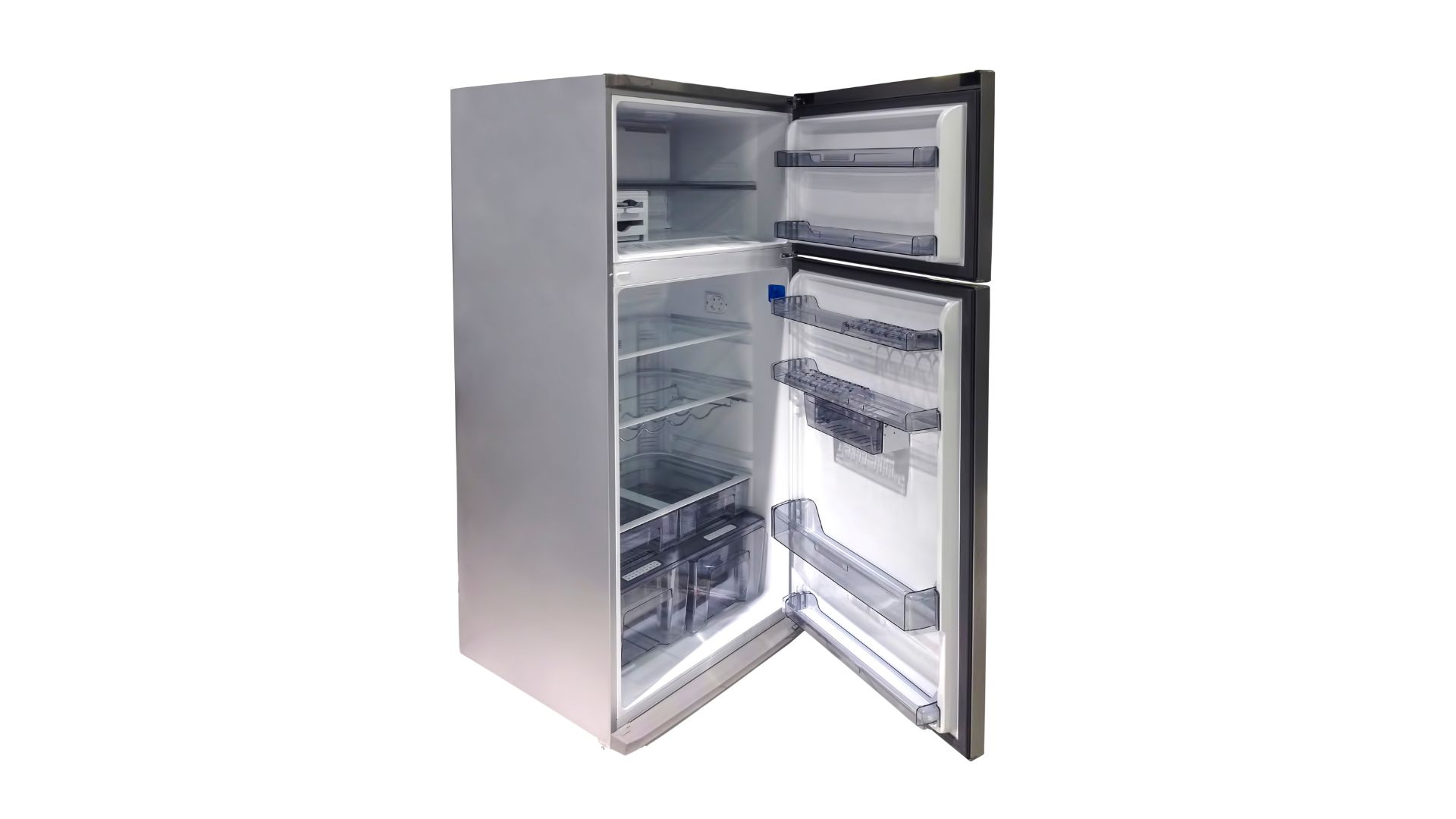If you’ve never seen one, a drip pan is a pan that holds water. Fridges have a drain hose that collects the water as it condenses, guiding it down to the drip pan. Don’t expect to find a drip pan on every fridge.
People only think about the drip pan when the frigidaire refrigerator starts leaking or smelling. And unfortunately, the drip pan can cause leaks and strange smells.
Does A Frigidaire Refrigerator Have A Drip Pan?
Modern frigidaire refrigerators are sophisticated appliances with water and ice dispensers. They definitely have a drip pan. It is located at the bottom. After all, the refrigerator relies on gravity to lead the water to the bottom. Therefore, you need some sort of container at the bottom to catch the water. As such, this is an excellent place to start your search.
The water in the drip pan will evaporate over time. In other words, the drip pan doesn’t hold water for long. Some appliances use a fan to expedite the evaporation process. Hotspot Customer Service UK has a video showing a drip pan on top of the compressor.
The heat from the compressor evaporates the water. Even in the absence of a fan and compressor, the fridge doesn’t generate enough water through condensation to fill the drain pan. Therefore, if you can see standing water in the pan, something has gone wrong, especially if the water has persisted for several days.
You have a severe leak somewhere in the fridge. Find that leak before the drip pan overflows and makes a mess of your kitchen. You can remove the drip pan to empty it manually before it overflows. But again, if the drip pan has so much water that an overflow is imminent, something has gone wrong.
Where Is The Drip Pan On A Frigidaire Refrigerator

- Check the bottom. The frigidaire appliance uses gravity to dispose of the water flowing through the defrost drain. Therefore, you should make the bottom the first place you inspect.
- Find the kick panel and remove it. If you’re lucky, you will find the pan once you remove the kick panel. Most panels will slip out of the way once you tilt and pull.
- If you can’t see the pan, check the back. Unfortunately, this means pulling the frigidaire fridge away from the wall.
- Some people can’t find the drip pan because they don’t know what it looks like. Identify the defrost drain line and follow it down to the pan. Look for a plastic or metallic pan beneath the point where the drain line empties.
- Use the manual. It has diagrams that reveal the locations of the various components, including the drip pan.
How To Clean The Drip Pan On A Frigidaire Refrigerator?
Cleaning a drip pan is easy, but only if you can remove the drip pan, which is not always possible:
- Check underneath and see if the drip pan will come out.
- If you need to remove the panel in front or behind, unplug the appliance. Otherwise, it may electrocute you.
- Use the relevant tools to remove the screws on the panel. This will give you access to the drain pan.
- Once the drain pan is free, wash it with a bleach solution. Some people use vinegar because they don’t want to change the pan’s color.
- If the pan develops mold, pour the bleach solution onto the surface and leave it for as long as it takes to kill the bacteria causing the bad smell. Don’t be afraid to soak the pan in the bleach solution multiple times, especially if the foul odor has persisted.
- If you’re satisfied with the state of the drip pan, use a towel to wipe the water away before putting this component back.
- Hunker encourages consumers to clean the front panel as well because it collects dust and debris.
But what if the drip pan is non-removable? Most drip pans are removable. But some models have a label at the bottom showing that the drip pan is non-removable. This shouldn’t keep you from cleaning the drip pan:
- Ignore the ‘Non-Removable’ sign. Lean the appliance back before removing the screws keeping the drip pan in place.
- This is only necessary for drip pans at the bottom. If you found this component in the lower back area, remove the panel. You don’t have to disconnect the drip panel.
- Get a cloth and soak it in a cleaning solution before scrubbing the drip pan. Where possible, try to access the drip pan from the front as well. Washing the component from the front and back allows you to reach every surface.
- Proceed gently. Otherwise, your scrubbing and wiping motions may damage the components in the vicinity.
- Keep wiping until every surface you see is clean. Use this method to empty an overflowing non-removable pan. The cloth will absorb the water.
Non-removable pans are incredibly inconvenient. They take longer to clean. But that isn’t an excuse to neglect them. Removable pans give you the option of using a nonabrasive brush to eliminate stubborn debris and encrusted stains.
Don’t forget to check the drain line. A blocked drain line can create leaks, leading to overflowing drip pans. It is just as important to inspect the pan for cracks and breaks. The pan keeps the floor clean by sitting at the bottom and catching the water.
But if it cracks, that water will escape. You can’t fix broken drip pans. The best option is to get a replacement. Ask an expert to perform this task if the drip pan is non-removable. They need to disassemble some of the fridge’s components to access and remove the drip pan.
Use your warranty if you have one. Frigidaire may void it if they learn that you hired a local technician to tamper with the drip pan. Make Frigidaire customer support your first call.
What Happens If You Don’t Clean The Drip Pan?
First of all, a drip pan can overflow. Many appliances have mechanisms that evaporate the water, including fans and the heat from a compressor. But sometimes, the fridge develops a leak that allows the water to accumulate faster than it can evaporate.
If you forget to clean the pan, the water will spill onto the floor, creating a tripping and electrocution hazard, depending on the frigidaire fridge’s location. The leak will get even worse if the pan develops a crack.
But what if the fridge can’t generate enough water to create an overflow? The damp conditions on the pan will encourage bacteria and mold to grow. After a while, a foul smell will invade the fridge and your kitchen.
If that doesn’t sound so bad, you should know that pests like rats can die on a drip pan, producing a worse odor once they decompose. Your best option is to clean this component every month or two. Don’t exceed three months. You don’t know what could have crawled onto the pan and died.
If you don’t have the patience to wash a non-removable pan, wikiHow has pictures showing you how to clean a non-removable pan using a wet wipe and a flexible claw grabber.

